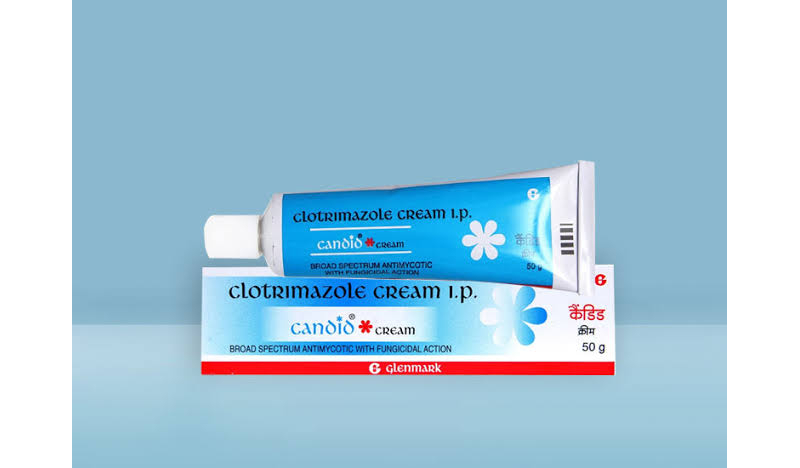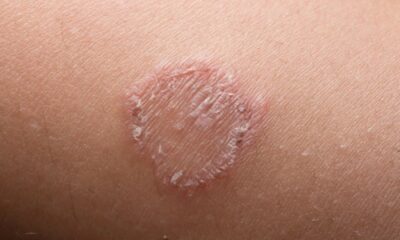Health
Understanding The Benefits Of Candid Cream For Treating Fungal Infections

The versatility of Candid cream extends to various fungal ailments, including athlete’s foot, fungal nappy rash, ringworm, and thrush, making it a comprehensive solution for a range of skin issues.
Fungal skin infections are quite prevalent, especially during the peak summer & monsoon season. Fortunately, there are numerous medications available for these infections. One highly effective medicine is Candid cream. This topical cream falls under the category of antifungal medications known as imidazoles, primarily utilised for treating fungal skin infections. It contains clotrimazole, which functions by eradicating the fungus responsible for the infection. The cream disrupts the fungal cell membrane, leading to the leakage of its components, ultimately killing the fungus and resolving the infection. Read on to learn more about the uses and benefits of Candid cream.
Why is Candid Cream Prescribed?
Candid cream can help in treating a variety of skin problems, such as:
- Athlete’s Foot: This fungal infection primarily targets the skin between the toes. It often affects individuals who have sweaty feet confined in tight shoes. Symptoms include a scaly rash accompanied by stinging, itching, and burning sensations.
- Diaper Rash: This type of skin rash occurs in the nappy area, typically due to prolonged exposure to stool or urine in a tight-fitting diaper. If left untreated, it can become infected with Candida yeast. Treatment involves the use of anti-inflammatory and antifungal medications.
- Ringworm: Also known as dermatophytosis or tinea, ringworm is a common fungal infection of the skin and nails. As the name suggests it characterizes are circular rash, which is itchy and red.
- Thrush: It is a yeast infection that affects both women and men. Symptoms in women include white vaginal discharge resembling cottage cheese, soreness, vaginal irritation and itching, and discomfort during urination or sex. In men, symptoms include redness, irritation, and a burning sensation around the penis, along with an unpleasant odour, a white discharge, and difficulty retracting the foreskin.
Candid cream can also be prescribed to treat other fungal skin infections like jock itch and fungal sweat rash.
How to Use Candid cream?
Candid cream is for external use only. To apply it effectively, take a small amount of it on your fingertip and apply a thin layer to the clean and dry affected area as instructed by your doctor. If your hands are not the affected area, then wash them thoroughly before and after applying the cream to prevent spreading the infection. Avoid getting the cream in your eyes or nose. If accidental contact occurs, then thoroughly rinse with water.
Candid Cream Side Effects
While Candid cream is generally considered safe for use, there is a possibility of experiencing some side effects. Common side effects may include:
- Skin irritation
- Itching
- Redness
- Dryness
- Burning or stinging sensation at the application site
Most of these side effects do not require medical attention and will subside as the body adjusts to the medication. However, if these signs aggravate or persistent for long time, then inform your doctor.
In rare cases, some individuals may experience a severe allergic reaction that requires immediate medical attention. Signs of such a reaction include:
- Swelling of the throat, mouth, or face,
- Rash
- Difficulty breathing or swallowing
- Nausea
- Dizziness
If you experience any of these symptoms, then seek emergency medical assistance.
Precautions to Take While Using Candid cream
There are some things you should keep in mind to ensure the safe and effective use of Candid cream. These include:
- If you are pregnant or breastfeeding, then consult your doctor before using Candid cream.
- Avoid using other topical medications simultaneously with Candid cream unless advised by your doctor.
- Before using Candid cream, inform your doctor about your medical history and any other medication you are taking to prevent potential negative effects.
- Do not use Candid cream if you are allergic to clotrimazole or any other ingredient.
- Avoid covering the treated area unless instructed by your doctor.
- Unless directed otherwise by your doctor, do not use Candid cream for more than four weeks. Prolonged use may lead to the fungus becoming resistant to the cream.
- Complete the full course of medication and do not skip any doses, even if you start feeling better.
Conclusion
Candid cream serves as an effective treatment option for fungal skin infections. By following proper usage instructions and precautionary measures, individuals can maximise the efficacy of Candid cream while minimising risks, allowing for safe and effective treatment of fungal skin conditions.
-

 Business3 weeks ago
Business3 weeks agoPrakash and Kamal Hinduja: Driving Social and Environmental Change
-
Education4 weeks ago
Fred DuVal: University Leadership as a Critical Resource for Climate Change Research and Life-Saving Solutions
-

 Health3 weeks ago
Health3 weeks agoThe Hinduja Brothers Commitment to Global Health: Empowering Communities Across Borders
-

 Cryptocurrency3 weeks ago
Cryptocurrency3 weeks agoDesigned For The Masses: How Akasha (AK1111) Is Unlocking Crypto For The Next Billion Users
-

 Cryptocurrency4 weeks ago
Cryptocurrency4 weeks agoNexaglobal & Future World Token (FWT): Could This Be the Next Big Crypto Investment of 2025?
-

 Sports4 weeks ago
Sports4 weeks agoWomen’s NCAA Tournament 2025 Sweet 16: Full Schedule, Fixtures, Teams, Bracket, and How to Watch March Madness Basketball Match Live
-

 Startup2 weeks ago
Startup2 weeks agoCost-Saving Strategies Every Small Business Owner Should Know to Boost Efficiency
-

 Startup3 weeks ago
Startup3 weeks agoMatthew Denegre on the Art of Deal Sourcing: Finding the Right Investment Opportunities

















